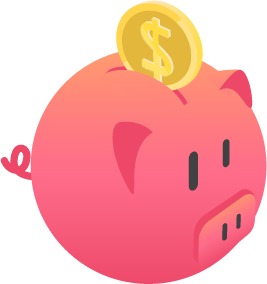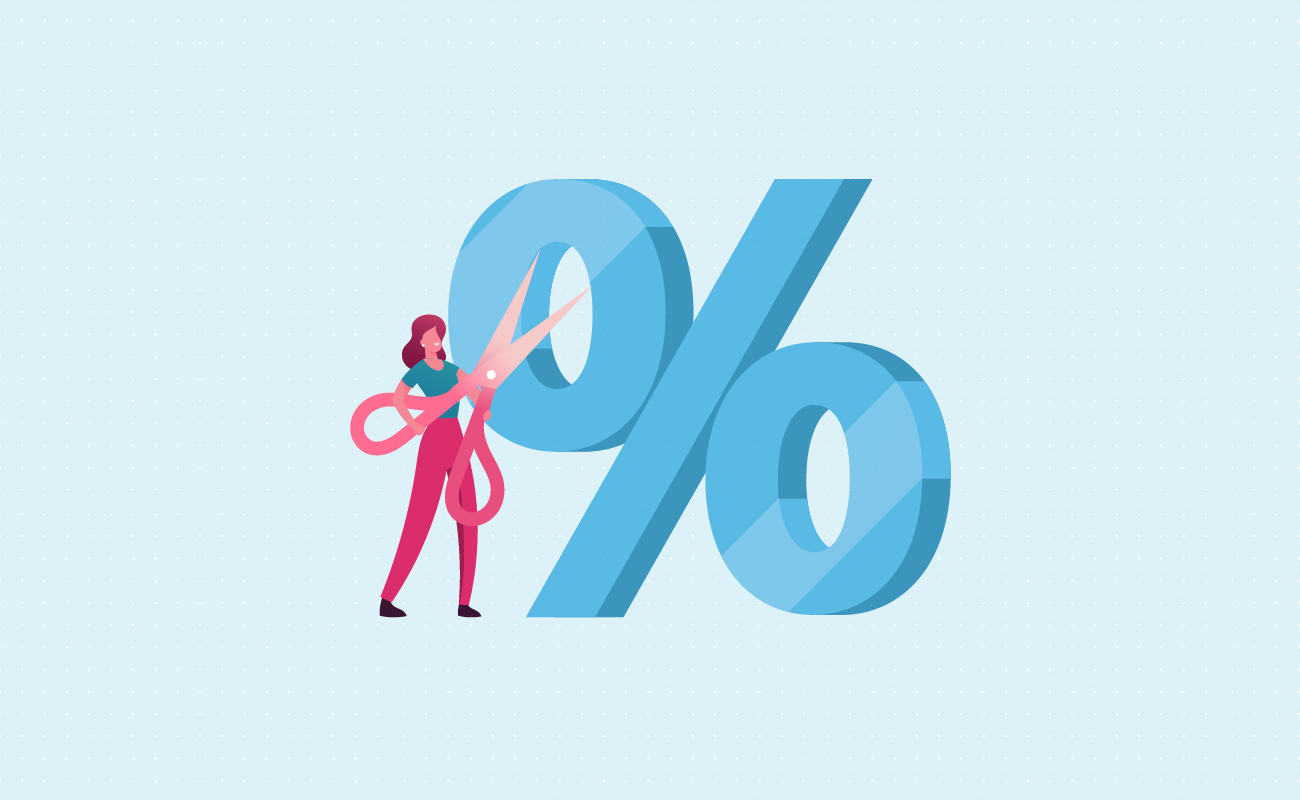Savings Goals
Net Worth
 Present Value Calculator
Present Value CalculatorUse this calculor to figure the present value (PV) of a known amount of money you anticipate receiving in the future.
Guide published by Jose Abuyuan on November 13, 2020

When people invest, they look to the future. Though it’s impossible to know what the future may hold, we can expect what it might be. For investments, we can make projections on how much we can make based on present numbers. If all goes well, we can expect a fair amount of money after a definite span of time.
Indeed, we can even prepare for the worst of life’s curveballs. Our key financial decisions involve making bold choices based on the risks we are best equipped to take. Even if we take on losses, we can be assured that at least some of our profits are safe. But not all of life’s risks are worth betting your money on. Sometimes what seems like a good deal might not be such a bargain after all.
As the saying goes, a bird in the hand is worth two in the bush. You shouldn’t chase opportunities that aren’t worth the money you have today. To determine whether your future investments are worth it, you must compare them to your money’s present value.
Present value is a term in accounting used to describe the value of future returns in today’s money. It is often defined in contrast to future value, the amount you would have made over time when investing. How much is your money today compared to money you might make tomorrow? This is the fundamental question that present value answers.
You might ask yourself a lot more questions when facing several investment options. Is this investment decision really wise? Are you better off saving your money where it is? Because most investment decisions are risky, it pays to double check. Understanding your present value is crucial to picking better deals when investing.
An investment’s returns must surpass the present value of the money today. This often means that by waiting for tomorrow’s cash flow, you’d made more money than you could have today. Comparing present values is also handy when choosing which investment to back. All things being equal, the thing that has the higher present value is worth more to investors. Thus, it is one of the most important factors considered in finance and business.
Present and future value are intrinsically linked. The money you receive today is worth more than its equivalent tomorrow. Your money, if invested in the right place, will grow. Even placing it in a savings account guarantees that your money will grow with interest. Money you leave alone, on the other hand, will lose its value. Even if you’ve kept it safe, it will lose its value through inflation. It would only keep a fraction of its buying power after a few years.
Finding the future value, uses this basic formula:
FV = PV x (1 + i)t
Where:
PV = Present value
FV = Future value
i = Rate
t = Term, in number of compounding periods
To find the present value of a future sum, we just need to calculate in reverse.
PV = FV / (1 + i)t
The main difference is in the rate you are using. To find the future value, you use whatever interest rate you receive. To calculate present value, on the other hand, you must establish a discount rate. This benchmark rate will measure how well your future value holds up.
Suppose you have $1,000. You took the option of saving that money in the bank. Your savings account has a 2 percent annual percentage yield (APY) and compounds each month. Thus, you must divide your rate by twelve. Here’s your future value:
Present value = $1,000.00
Interest rate = 2% annual, 0.17% monthly
Compounding periods = 60 (5 years)
FV = $1,000 x (1 + 0.0017)^60
FV = $1,000 x (1.0017)^60
FV = $1,000 x 1.107
FV = $1,107
By the end of five years, your money would be worth about $1,107. Not bad. Had you received $1,000 five years later, however, this is what happens. Our next calculation will use your bank’s APY as our discount rate.
Future Value = $1,000.00
Discount rate = 0.17%
Compounding periods = 60
PV = $1,000 / (1 + 0.0017)^60
PV = $1,000 / 1.0017^60
PV = $1,000 / 1.107
PV = $903.34
Using only your bank’s APY, the present value of $1,000 you receive in five years will only be worth $903.34 today. Thus, you are better off saving the $1,000 you have right now.

Now, suppose you instead have $250 in the first year. You then receive $700 in three years. After that, you receive another $250 in two years. After five years, you now have $1,200. It seems like a step up from the $1,107 you would’ve earned in the bank, but is it really? Let’s examine each of the increments and work out their present value.
Because each of the increments are a few years apart, we need to adjust the formula. There are two values to consider in this situation. To find the present value of the total, we must identify the present values of both increments. We then add these to our starting present value.
Partial Present Value = $250
Discount rate = 2% annual; 0.17% monthly
Future Value A = $700.00
Compounding Period A = 36
Future Value B = $250
Compounding Period B = 60
PV = $250 + [$700 / (1 + 0.0017)^36 + [$250 / (1 + 0.0017)^60]
PV = $250 + [$700 / 1.0017^36] + [$250 / 1.0017^60]
PV = $250 + [$700 / 1.063] + [$250 / 1.107]
PV = $250 + $658.51 + $225.84
PV = $1,134.35
The $1,200 you’d have in five years is worth $1,134.35 today. Thus, this incremental option is a better deal than the amount you’d have earned from the bank.

Work out the present value of any return of investment offered by a financial adviser or fund manager. To find out if they’re a good deal, compare their present value to other offers.

The discount rate is the most important factor involved in finding present value. It is the rate used to discount your potential future earnings back to their present value. It is, in essence, the money you would’ve made if you invested it in something else. This is often a default option, such as a bank.
Defining a discount rate is critical to identifying the future value with the best rewards. This is often based on the APY of a stable investment option. Your discount rate will be based on the asset you feel the most secure investing in. In our past examples, our discount rate was defined by a high-interest savings account. This will be similar for most individual investors. Businesses, meanwhile, derive their discount rate from some other metric. Often, this is the weighted average cost of capital (WACC), the sum of all returns needed to make an investment feasible.
The discount rate will influence whether an option’s present value is worthwhile. For instance, one investment may not seem ideal if your discount rate was high. When your discount rate is low, on the other hand, the new investment might look like a better deal.
Let’s see this in action. Suppose you received $30,000. You have the option of putting it in an investment that promises to yield $60,000 in 10 years, and another that promises to yield $45,000 in around 5 years. Using our calculator above, let’s compare the present value of these two options. For starters, let’s assume your discount rate is the same as that of your bank’s APY, 2 percent:
Starting Principal: $30,000
Discount Rate: 2% (Compounds monthly)
Terms: 5 years (Option 1), 10 years (Option 2)
| Option 1 (10 years) | Option 2 (5 years) | |
|---|---|---|
| Future Value | $60,000.00 | $45,000.00 |
| Present Value | $49,132.02 | $40,721.07 |
The first option is the clear winner in this scenario. With such a low rate, you’re better off putting your money where the biggest payout goes. You also stand to make an extra $8,410.95 by choosing the longer option. In this instance, patience is rewarding, though not by much.
But let’s switch things out. Suppose your discount rate is instead based on the estimated returns of your present investment portfolio. It has an APY of 7 percent.
Starting Principal: $30,000
Discount Rate: 7% (Compounds annually)
Terms: 5 years (Option 1), 10 years (Option 2)
| Option 1 (10 years) | Option 2 (5 years) | |
|---|---|---|
| Future Value | $60,000.00 | $45,000.00 |
| Present Value | $30,500.96 | $32,084.38 |
Both investment options offer returns larger than your current principal. However, they have markedly different present values. The ten-year option has the larger payout but has a present value of $30,500.96. This is $1,583.42 less than the returns from the shorter, yet smaller option. Other things being equal, this investment offers the best returns.
Sometimes, rates can vary based on the length of time your money stays invested. Suppose your accounts deliver a return of 12 percent over the course of a decade but only 5 percent in 5 years. How will this affect your payout?
Starting Principal: $30,000
Discount Rate: 2% (Option 1), 5% (Option 2)
Terms: 10 years (Option 1), 5 years (Option 2)
| Option 1 (10 years, 12% discount rate) | Option 2 (5 years, 5% discount rate) | |
|---|---|---|
| Future Value | $60,000.00 | $45,000.00 |
| Present Value | $19,318.39 | $35,258.68 |
The second option now looks even better by comparison. The present value of your future returns is much higher. The first option is now much worse since you can make more money investing it in your portfolio.
Compound interest is the investor’s greatest ally alongside time. This represents interest on interest. You receive interest in intervals called compounding periods. For most investments, these are usually measured in years. For bank accounts, meanwhile, the standard compounding periods are monthly.
Compound interest represents the exponential growth of your money. This is in contrast to simple interest, where money’s growth is based on a fixed principal. At the end of each compounding period, the interest you’ve earned so far is added to your principal. As your principal grows, so does your interest. Without any extra efforton your part, your money just keeps on growing. This continues as long as your money remains invested.
Given enough time, the money you make through interest could be enough to earn a substantial income on its own. Your ultimate retirement goal is often to live off your retirement’s interest as income.

The secret to getting the compound interest train going is reinvestment. Keep your money invested for as long as you can to let it grow. Unless the situation warrants it, don’t touch the capital!
Finding your present value is compounding in reverse. You look at how much your starting interest would be to reach your future value. Thus, the present value is the principal you need to accomplish the future sum through your current investments. An investment that compounds faster is always the better deal.
Over time, money loses its value to inflation. The rate this happens varies each year. In a healthy economy, you can expect an annual inflation rate of about 2 percent. Inflation can be a hazard for long-term investing.
One example of the long-term effects of inflation is seen when you put money in a savings account. These often have very low annual rates. A 2 percent APY is already very generous. A 2 percent inflation rate nullifies any growth you make. While you may have more money on paper, your money has also lost its buying power.
Finding out your present value is especially important when you factor in inflation. To be worthwhile, your investments must outperform inflation. This provides what is known as the real rate of return, which is your earnings minus the value it loses over time. The higher your projected returns, the more your money would keep its value.
Hedging against inflation involves investing in stocks, which have higher short-term risks. To beat inflation and make a hefty profit, your investments must all be for the long run.

The present value is key to finding discounted cash flow. This metric is the true value of the cash flow received from incremental payments. Through discounted cash flow, businesses can measure the expected returns from capital investments. Businesses rely on this metric to determine if a major business expense is worth taking. It can also help them find the best use for their money when comparing major business decisions.
The formula for discounted cash flow is as follows:
DCF = [CF1 / (1 + i)1] + [CF2 / (1 + i)2] + [CFn / (1 + i)n]
Where:
DCF = Discounted cash flow
CF = Cash flow; the subscript determines the number of years
i = Discounted interest rate
n = Number of years after the first two
For instance, a business must choose between two major capital expenditures. On one hand, they can upgrade all their equipment system-wide. On the other, they could set up a new satellite office. Before they pursue either action, it must know the present value of their cash flow over a set number of years. In our example, both the machine upgrades and the new facility will cost $10 million dollars. The business uses its WACC as a discount rate, which is 5 percent. The board gives the rate of return at five years.
The estimated cash flows for both the machine upgrade and the new office are as follows:
| Year | New Office Building | New Equipment |
|---|---|---|
| 1 | $1,000,000.00 | $1,000,000.00 |
| 2 | $1,000,000.00 | $2,000,000.00 |
| 3 | $3,000,000.00 | $3,000,000.00 |
| 4 | $6,000,000.00 | $6,000,000.00 |
| 5 | $8,000,000.00 | $8,000,000.00 |
| Total: | $19,000,000.00 | $24,000,000.00 |
To be worthwhile, the total discounted cash flow over a set number of years must exceed its present value. How long it needs to take will, of course, vary. The shorter the time it takes for the discounted cash flow to pay for itself, the better it is as an investment. In our example, the time is five years.
The following table presents the discounted cash flow of the same options.
| Year | New Office Building | New Equipment |
|---|---|---|
| 1 | $952,380.95 | $952,380.95 |
| 2 | $907,029.48 | $1,814,058.96 |
| 3 | $2,591,568.76 | $2,591,568.76 |
| 4 | $4,936,240.23 | $4,936,240.23 |
| 5 | $6,268,118.78 | $6,268,118.78 |
| Total: | $15,655,338.20 | $16,562,367.68 |
Both options make sense business-wise. They have a discounted cash flow high enough to cover the costs of the improvement. Based on this data alone, however, the option to buy new equipment provides the biggest yields over a five-year period for the same price. By upgrading, the business also makes an extra $907,029.48 more in profit.
Often, picking your present and future values is more than just running the numbers. You must consider several factors alongside these figures. A few of these include investment risks, taxes, and inflation. Understanding the effects these have on your investment choices can reveal which of your options truly bolsters your profits.
Risks are endemic to all investments. Even the so-called investments, such as savings accounts and treasury bills, have some modicum or risks attached to them. Factoring in risks will skew your perception of which option is the right one to take. Present value can help you weigh in on whether the risks are worth the returns.
Opportunity costs are also a hazard. By playing it too safe with your money, you risk losing out on profits that you would’ve had. If you were too gung-ho however, you’d likely lose too much of your savings too soon. Weigh in the benefits and risks you face when investing with care.
Taxation also takes its toll. Unless you have a way of reducing your tax burdens, you might not be making as much money as you think. Managing your taxes is the key to hedging against taxation’s effects on your investments. For many people, tax-deferred accounts offer some relief. By postponing their taxes until retirement, they leave their investments to grow. This is an excellent strategy for people who expect to fall under a much lower tax bracket in the future.
You worked hard for your money, so you’d want to invest it somewhere secure. A lot of competing offers will sweeten the pot with rates that seem too good to be true. While it’s easy to spot the most egregious of these overblown offers, others can still slip past your radar. Don’t be daunted by the math involved. Do your homework and compare each of the competing offers according to what they have in store.
One of the least riskiest places you can put your money is in extra debt payments. The money you save on future interest payments outperforms many investments in the short term. But don’t take our word for it. Run the numbers through our accelerated debt repayment calculator.
Jose Abuyuan is a web content writer, fictionist, and digital artist hailing from Las Piñas City. He is a graduate of Communication and Media Studies at San Beda College Alabang, who took his internship in the weekly news magazine the Philippines Graphic. He has authored works professionally for over a decade.